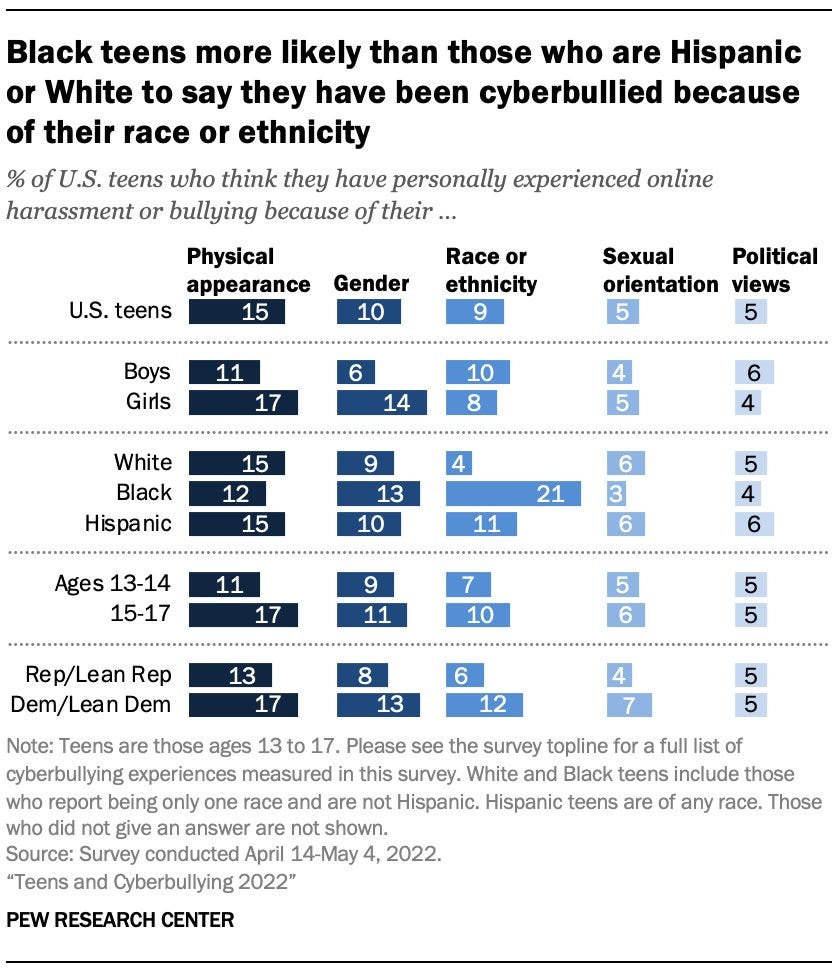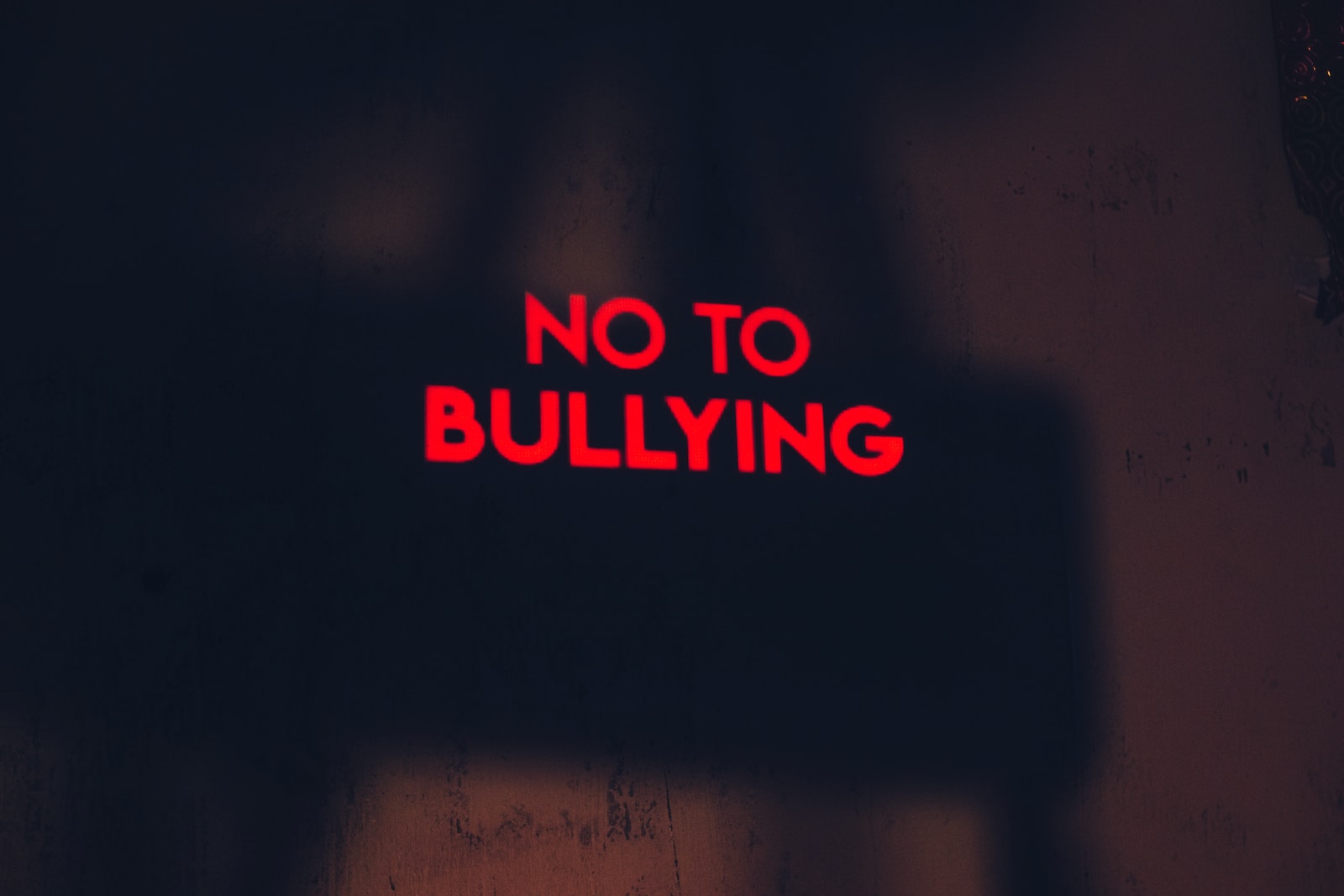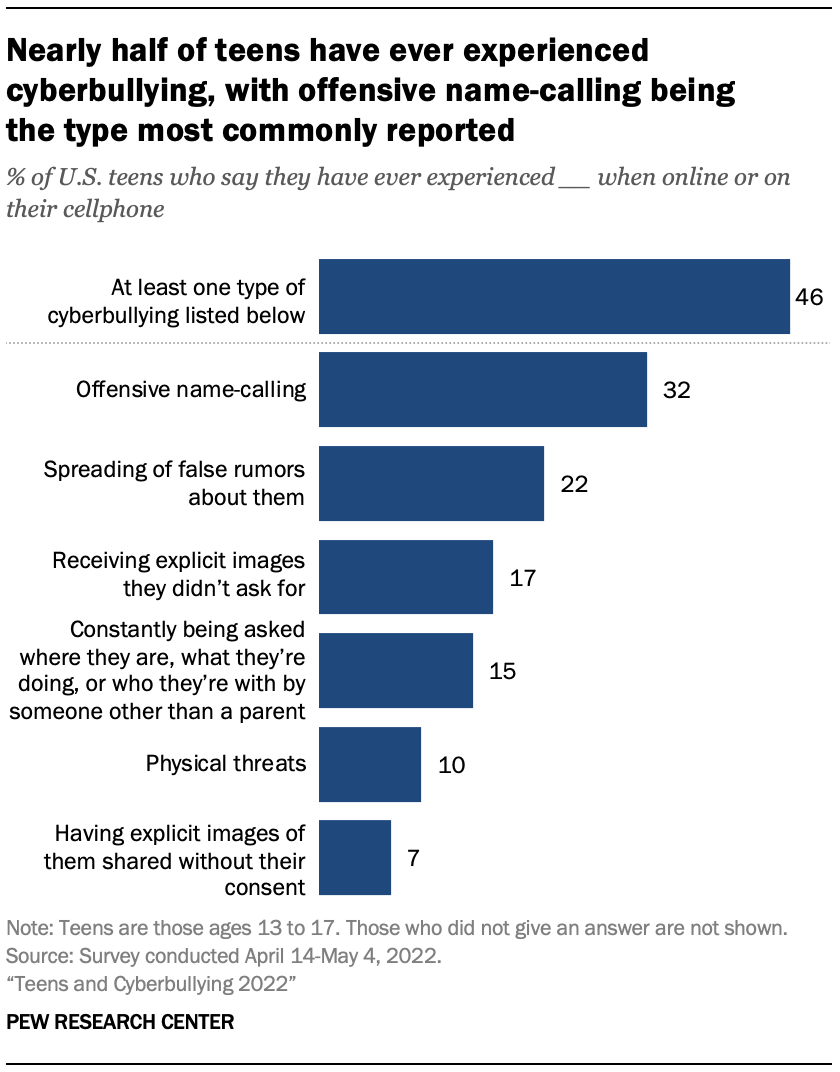Bullying, a persistent societal challenge, has expanded its reach from schools and local communities to the World Wide Web. With the rise of smartphones and social media, individuals can now engage in this aggressive behavior from behind screens. This form of bullying, known as cyberbullying, takes advantage of electronic communication channels to anonymously harass and intimidate others, often involving the spread of harmful content, rumors, and offensive images. In this article, we will explore alarming statistics related to cyberbullying and provide proactive measures to protect oneself and children from online harassment on social media platforms.
Insights into cyberbullying statistics
According to a recent survey conducted by the Pew Research Center in 2022, approximately 46% of teenagers aged 13 to 17 in the United States have reported experiencing at least one of six different cyberbullying behaviors.

According to the same survey, Black and Hispanic teens are more concerned about cyberbullying as a significant issue in their age group compared to White teens.
The likelihood of a teenager reporting being targeted for cyberbullying based on race or ethnicity is influenced by their racial or ethnic background. The survey reveals that 21% of Black teens report being subjected to such targeted bullying, while the percentage is 11% for Hispanic teens. In contrast, a smaller percentage of White teens, only 4%, report experiencing cyberbullying based on their race or ethnicity.
Examples of cyberbullying cases
The online harassment, threats, and public humiliation that victims endure can cause significant psychological distress and impact on the mental health of teenagers, often resulting in severe consequences such as suicide. Adolescents who experience cyberbullying may develop heightened levels of anxiety, depression, and feelings of loneliness.
In this video, 12-year-old Rebecca Sedwick at school took her own life at school after being bullied online by her two classmates.
In another case, a 16-year-old teenager committed suicide after being harassed on Snapchat. These heartbreaking stories highlight the urgent need to address and combat cyberbullying.
Social media’s role in cyberbullying prevention
Social media platforms play a significant role in the occurrence and prevention of cyberbullying. Research conducted by the Cyberbullying Research Center reveals that 73% of teenagers who have experienced cyberbullying encounter it on social media platforms. Among these platforms, Facebook emerges as the most common site for cyberbullying, followed by Twitter, Instagram, and Snapchat [3].
Recognizing the impact of cyberbullying, social media platforms have taken steps to address the issue. Facebook, for instance, emphasizes its zero-tolerance policy towards bullying and harassment, aiming to create a safe and respectful community. They rely on user reports to identify and remove such behavior but also work on proactively detecting and addressing cyberbullying instances.
Similarly, Instagram, owned by Meta (Facebook), has implemented features and tools to protect users from bullying. They are committed to ensuring the safety of their users and have developed measures to address cyberbullying effectively. More information about their anti-bullying initiatives can be found on their website: https://about.instagram.com/community/anti-bullying
These efforts by social media platforms demonstrate their recognition of the problem and their dedication to creating a safer online environment for users. However, users need to take other steps to protect themselves.
Measures for protecting users from cyberbullying
To keep social media users, especially children, safe from cyberbullying, consider the following measures [4]:
1. Educate kids about privacy: Teach children the importance of keeping personal information private about themselves and their families, such as their full name, address, phone number, and financial details. Explain, for example, how such information is needed by a bully to start targeting someone.
2. Change privacy settings: Adjust the privacy settings of your kids on social networking sites to limit who can view their profile and post on their website. Explain why these settings are important in safeguarding their information.
6. Discuss cyberbullying with your kids: Have open conversations with kids about bullying, both online and offline. Teach them about the consequences of their words and actions, encouraging empathy and respect for others. Urge them to talk to a trusted adult if they become victims of bullying or if they feel like taking action on their own.
7. Discuss the importance of avoiding discussions about sensitive and intimate topics with strangers online: Research indicates that teens who refrain from engaging in such conversations are less likely to encounter online predators. If appropriate, monitor their online behavior and search for any concerning information.
8. Encourage kids to trust their instincts: support children to speak up if they feel threatened or uncomfortable online. Teach them to report abusive, suspicious, or inappropriate behavior to the authorities and the social networking site.
By implementing these measures, parents and guardians can help protect their children from cyberbullying and promote a safer online environment for social media users.
Protect your personal information online with Eydle
Social media platforms have become hotspots for cyberbullying, with scammers using sophisticated techniques to target individuals and businesses and damage their reputations. At Eydle, we understand the importance of protecting your personal information online. Our advanced AI technology enables us to provide comprehensive social media protection services, keeping you and your business safe from online fraud.
With Eydle, you can rest assured that our system is designed to detect and prevent cyberbullying incidents on social media platforms. Our cutting-edge AI technology analyzes posts, messages, and comments to identify potential threats and ensure your safety in the online space.
To learn more about our social media protection services and how Eydle can help you stay one step ahead of cyberbullying on social media, visit www.eydle.com or contact us at [email protected] today.
Sources:
1. https://www.statista.com/statistics/509327/student-cyber-bullying-victimization-rate-usa/
2. https://www.pewresearch.org/internet/2022/12/15/teens-and-cyberbullying-2022/
3. https://socialmediavictims.org/cyberbullying/effects/
Social Media and Cyberbullying: Protecting Users from Online Harassment was originally published in Eydle on Medium, where people are continuing the conversation by highlighting and responding to this story.





